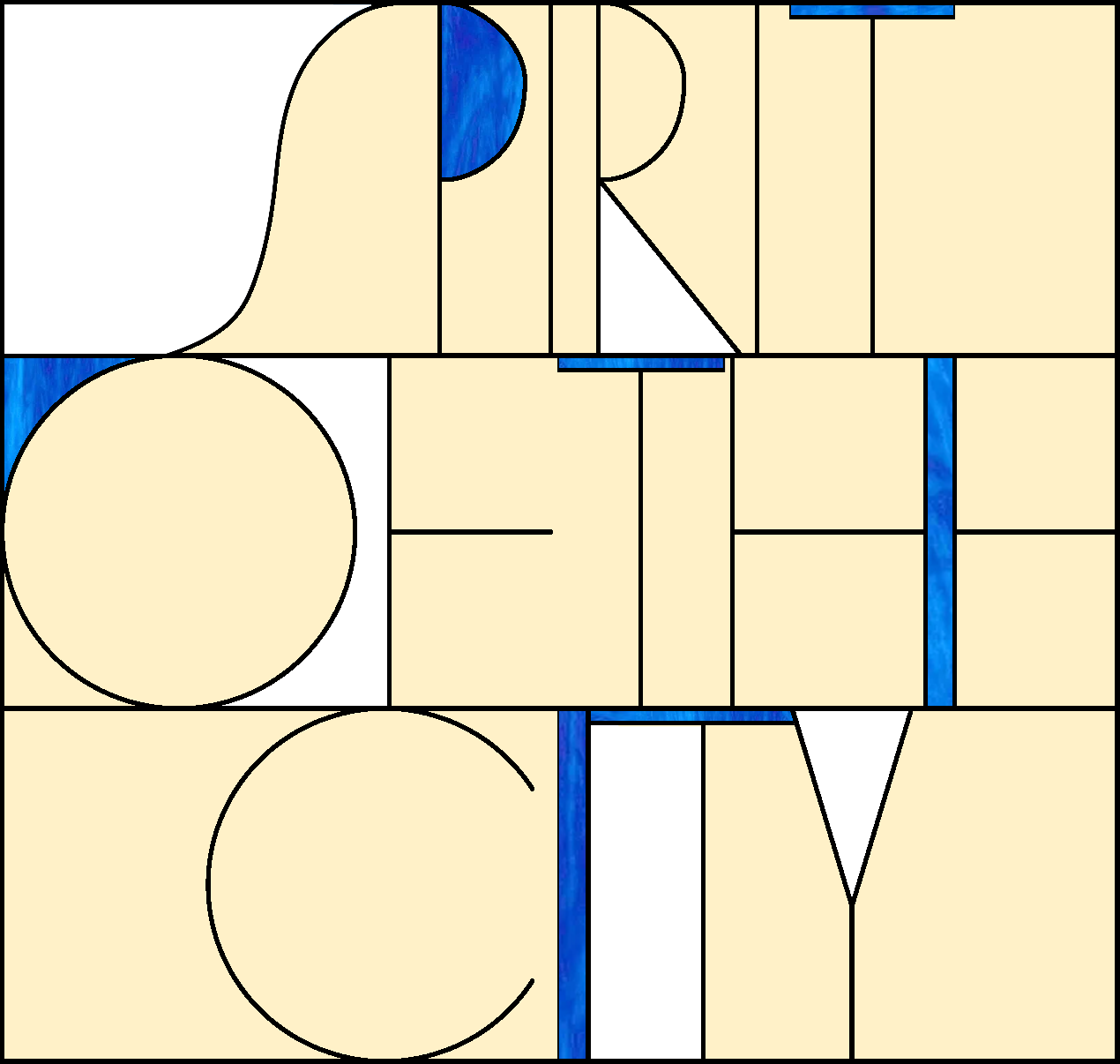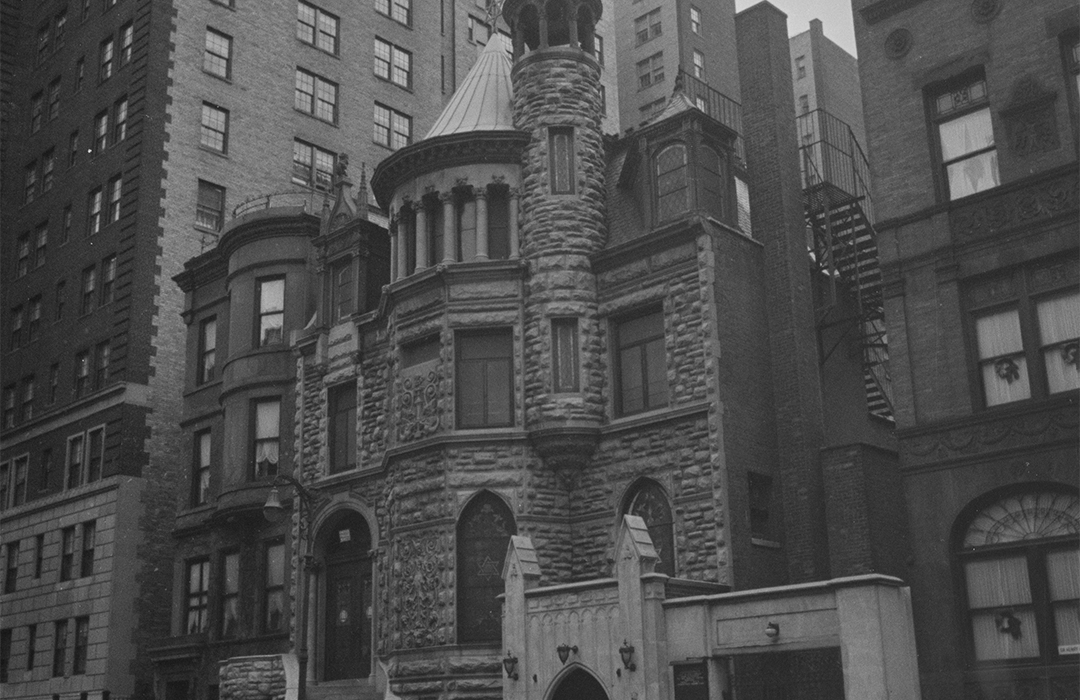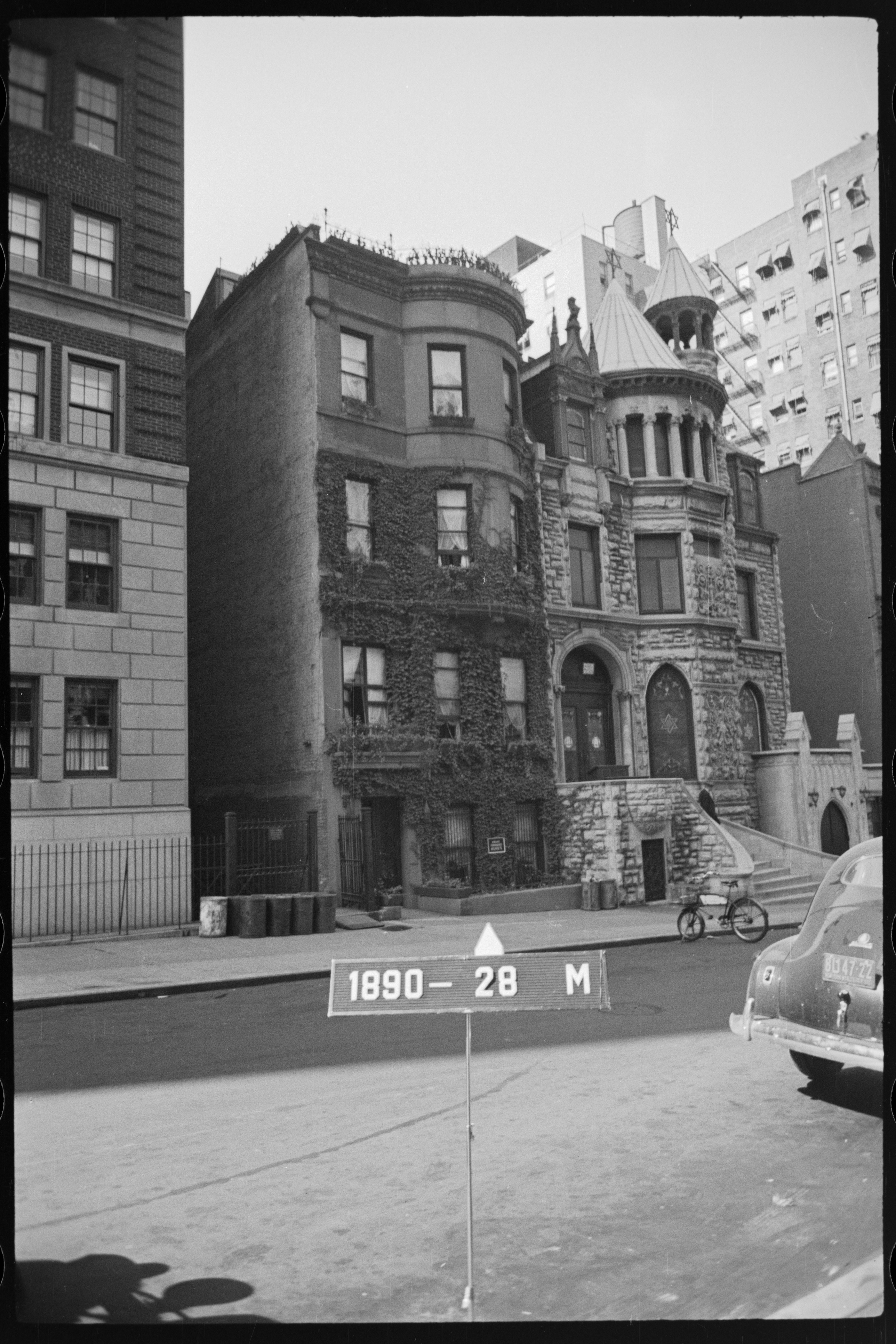
Riverside Synagogue
310 West 103rd Street
by Tom Miller
In 1922, the Rev. Dr. Edward Lissman founded Congregation Kehillath Israel Chofetz Chaim, “Community of Israel Desirer of Life.” The congregation quickly gained a moniker that more easily rolled off the tongue, the Riverside Synagogue.
At the time of the congregation’s founding, the family of Archibald Charles Heaphy lived in the striking stone mansion at 310 West 103rd Street. On May 6, 1924, the New York Evening Post reported that the Riverside Synagogue had commissioned architect Maximillian Zipkes “to draw plans converting and adding to the private mansion at 310 West 103d street, at a cost of about $40,000.” The cost of the renovations would translate to about $713,000 in 2024.
The changes were mostly internal. Zipkes transformed the basement and parlor floors into a single, soaring space for worship services with a balcony and stained-glass windows. On the second floor was a classroom (the congregation’s school had 300 students by now), and the superintendent’s office and apartment were on the third floor. Zipkes relocated the entrance to street level within a neo-Gothic annex that starkly contrasted with the design of the original structure.
Zipkes transformed the basement and parlor floors into a single, soaring space for worship services with a balcony and stained-glass windows.
On February 28, 1925, The Reform Advocate announced, “Next Sunday afternoon, the Riverside Synagogue, of which Rev. Edward Lissman is the minister, will formally dedicate its new temple on West 103rd Street. Hitherto, the congregation has been worshipping in temporary quarters.” At the ceremony, reported The New York Times on March 2, “Letters from President Coolidge and Governor Smith, expression hope for the success of the synagogue, were read by Dr. Lissman.”
The Rev. Dr. Lissman had served as honorary chaplain of the Fire Department since 1918, when he was still rabbi of the Hebrew Tabernacle in Harlem. His deep interest in the department resulted in the Naer Tormid Society of the New York Fire Department using the synagogue as its base. After serving with the department for 12 years, Mayor James J. Walker appointed Rabbi Lissman as head chaplain of the Fire Department in 1930. He was the first Jewish chaplain in the department’s history.
The close FDNY-Riverside Synagogue relationship was evidenced on November 21, 1941, when a bronze memorial plaque to firefighter William W. Cohen was unveiled in the synagogue. Cohen, who died on October 12, 1940, had been the “representative and guiding spirit of the Police-Fire Department baseball games,” explained The New York Times.
Every year, the Naer Tormid Society held a memorial service here for the Jewish firefighters who had died the previous year. Rabbi Lissman, of course, conducted the services, assisted by high-ranking department officials. On May 14, 1943, for instance, Fire Commissioner Patrick Walsh and Assistant Chief John J. McCarthy, spoke. Seven hundred firefighters and friends attended that service.
In 1940, Simon Klein was appointed sexton and given the top-floor apartment. He and his wife, Sarah, had come from Paterson, New Jersey, where, until 1920, Klein had been a prominent electrical appliance merchant. After a decade in the position, Klein was fired on February 3, 1950, and was ordered to vacate the apartment. The Morning Call of Paterson, New Jersey, reported, “Rabbi Edward Lissman said that the congregation had long been dissatisfied with the sexton’s work.”
The Lissmans refused to leave, saying they had no place to go. And so, the trustees ordered movers to remove the couple’s possessions. On April 13, The Morning Call reported, “Mrs. Klein was praying in the apartment when the moving men arrived and started carrying out the furniture.” Simon Klein paced back and forth on the sidewalk, repeating that the eviction was unfair and pleading with the moving men.”
Klein collapsed on the hallway floor.
At 3:00, after running up and down the stairs and sobbing, “We have no place to go, we have no place to go,” Klein collapsed on the hallway floor. He was pronounced dead a few minutes later. The Morning Call ended its article saying, “The furniture stood on the sidewalk in the rain as Klein’s body was carried away.”
In 1957 the synagogue’s Community Counselling Institute devised a clever method of reaching potential delinquents. The New York Times, on November 22, reported that its first issue of Crimescope, a comic book “designed to build contempt for criminals” had been published. The hope was that a “closeup on hoodlums and punks” would dissuade teenagers from lives of crime.
Rabbi Edward Lissman died at the age of 92 on July 29, 1962. The attendance at his funeral was too large for the little 103rd Street synagogue to accommodate. The New York Times reported, “An official line-of-duty funeral service will be held by the Fire Department at the Central Synagogue, Lexington Avenue and Fifty-fifth Street.”
Rabbi Lissman’s death signaled the end of the synagogue at 310 West 103rd Street. The following year, Rabbi Bernard Bergman, head of Congregation Kehilath Israel, demolished the building and erected a 13-story apartment building on the site. The congregation currently worships in the Bronx.
Tom Miller is a social historian and blogger at daytoninmanhattan.blogspot.com



